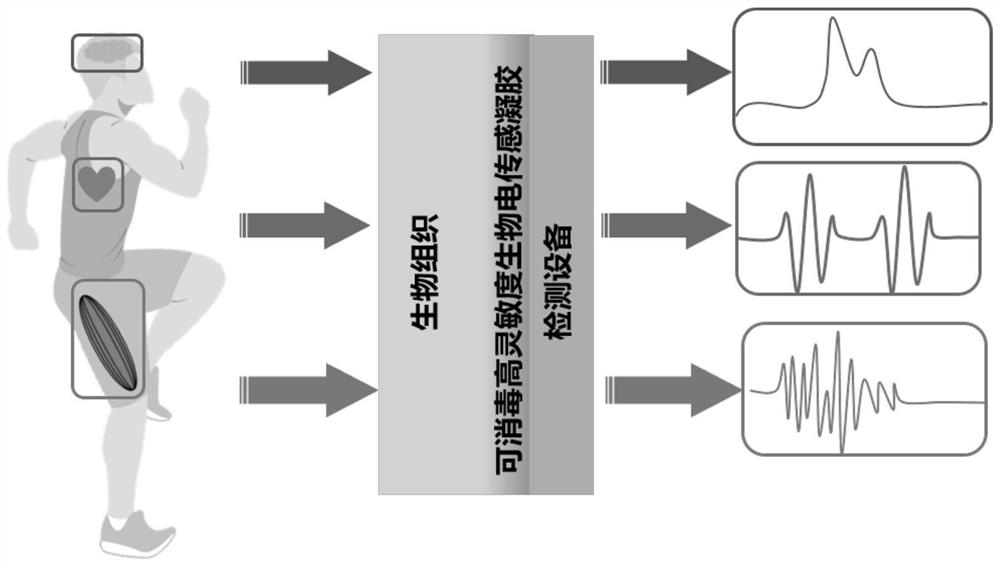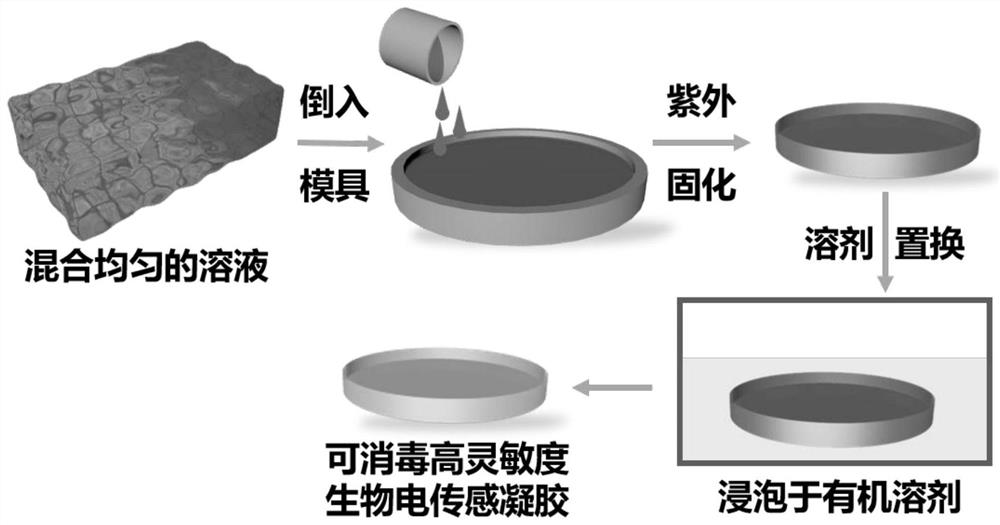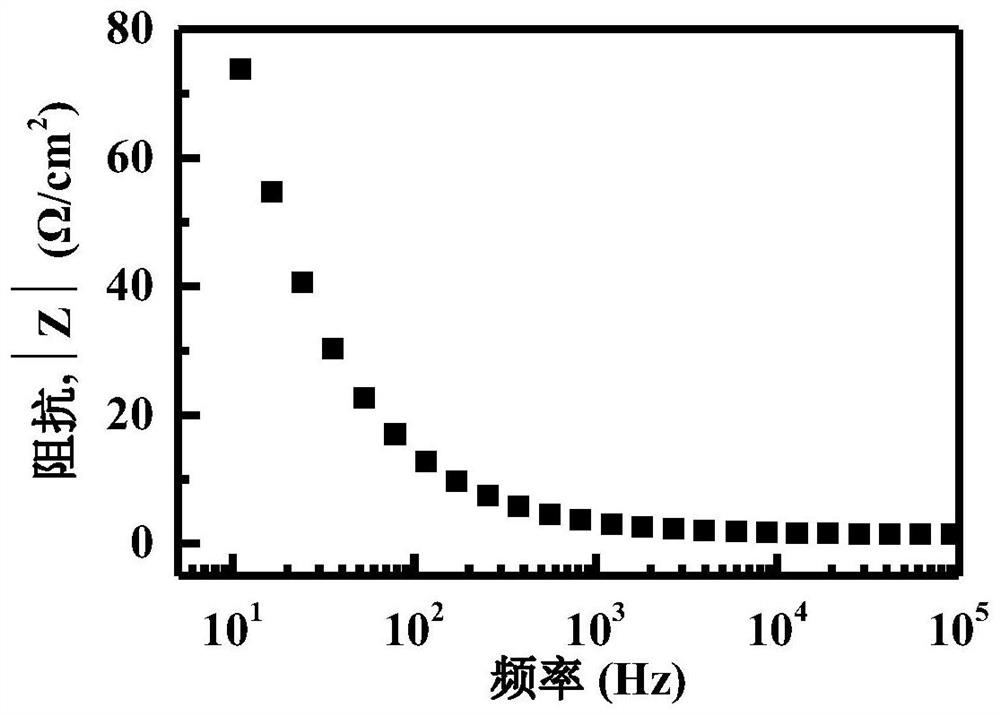Interface material capable of being used for virtual-reality interaction and preparation method thereof
An interface material, a realistic technology, applied in the field of human-computer interaction, can solve the problems of invasive electrode biological damage, commercial electrodes cannot be reused, etc.
- Summary
- Abstract
- Description
- Claims
- Application Information
AI Technical Summary
Problems solved by technology
Method used
Image
Examples
Embodiment 1
[0033] (1) At room temperature, weigh 2g of acrylamide powder and place it in a 100mL beaker, add 10mL of deionized water, then add 0.8g of sodium chloride, 0.1g of tannic acid, 0.005g of methylenebisacrylamide, 0.05g of Photoinitiator I2959, magnetically stirred for 1h to obtain a transparent and clear pre-polymerization solution;
[0034] (2) Place the prepolymerized solution obtained in step (1) under an ultraviolet lamp with a wavelength of 365nm and a power of 45W for 20 minutes to obtain a pregel;
[0035] (3) Soak the pregel obtained in step (2) in ethylene glycol for 1 hour to obtain an interface material that can be used for virtual-reality interaction.
[0036] As shown in the content of the invention in the patent, the application fields of interface materials that can be used for virtual-reality interaction (detection of EEG signals, ECG signals, and EMG signals) are as follows: figure 1 As shown, its preparation process is as follows figure 2 shown. Such as ...
Embodiment 2
[0038] (1) At room temperature, weigh 2g of acrylamide powder and place it in a 100mL beaker, add 10mL of deionized water, then add 0.8g of sodium chloride, 0.05g of tannic acid, 0.005g of methylenebisacrylamide, 0.05g of Photoinitiator I2959, magnetically stirred for 1h to obtain a transparent and clear pre-polymerization solution;
[0039] (2) Place the prepolymerized solution obtained in step (1) under an ultraviolet lamp with a wavelength of 365nm and a power of 40W for 30min to obtain a pregel;
[0040] (3) Soak the pregel obtained in step (2) in ethylene glycol for 1 hour to obtain a sterilizable and highly sensitive interface material that can be used for virtual-reality interaction.
[0041] The appearance and material properties of the interface material that can be used for virtual-reality interaction obtained in Example 2 are similar to those in Example 1. But compared with Example 1, due to the decrease in the amount of tannin used, the viscosity of the interface ...
Embodiment 3
[0043] (1) At room temperature, weigh 2g of acrylic acid liquid into a 100mL beaker, add 10mL of deionized water, then add 0.8g of sodium chloride, 0.1g of tannic acid, 0.005g of methylene bisacrylamide, 0.05g of light Initiator I2959, magnetically stirred for 1h to obtain a transparent and clear pre-polymerization solution;
[0044] (2) Place the prepolymerized solution obtained in step (1) under an ultraviolet lamp with a wavelength of 365nm and a power of 45W for 20 minutes to obtain a pregel;
[0045] (3) Soak the pregel obtained in step (2) in ethylene glycol for 1 hour to obtain a sterilizable and highly sensitive interface material that can be used for virtual-reality interaction.
[0046] The appearance and material properties of the interface material used in virtual-reality interaction obtained in Example 3 are similar to those in Example 1. But compared with Example 1, due to the use of monomers changed from acrylamide to acrylic acid, the mechanical properties of ...
PUM
| Property | Measurement | Unit |
|---|---|---|
| Thickness | aaaaa | aaaaa |
Abstract
Description
Claims
Application Information
 Login to View More
Login to View More - R&D
- Intellectual Property
- Life Sciences
- Materials
- Tech Scout
- Unparalleled Data Quality
- Higher Quality Content
- 60% Fewer Hallucinations
Browse by: Latest US Patents, China's latest patents, Technical Efficacy Thesaurus, Application Domain, Technology Topic, Popular Technical Reports.
© 2025 PatSnap. All rights reserved.Legal|Privacy policy|Modern Slavery Act Transparency Statement|Sitemap|About US| Contact US: help@patsnap.com



